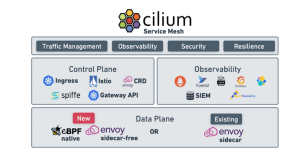
Choosing the right microcontroller for your project can be tricky. There are so many types out there, but how to choose the right one?
A good microcontroller is not just a component – it’s the heart of your project. It must be efficient, powerful, and not overpriced.
If you need to choose a brain for your project but aren’t sure which microcontroller to buy, this article will help you understand which one will meet your demands. Here, you can learn what a microcontroller is in detail and the criteria to consider when picking one according to your project needs. You can also get more insights on software development services for embedded systems.
What Is a Microcontroller?
Microcontrollers are everywhere! You’ll find them in everyday items like washing machines, microwaves, and TV remotes, among many other devices.
A microcontroller is a chip that consists of several key components like a processor, memory, input/output ports, and timers. It serves as a mini-brain for controlling electronic devices. For example, in a washing machine, a microcontroller decides when to spin, rinse, and drain based on the settings you choose.

These little devices are also super popular in DIY electronics. People use them to run self-made robots, smart home devices, and even small weather stations they build at home.
Wondering how to choose a microcontroller for a project, you should know that different types are available. Best microcontrollers for embedded projects vary based on power, memory constraints, and the purpose of use. The most popular ones are:
- Arduino. It’s great for beginners and hobbyists, as it’s perfect for simple projects like making a light blink, measuring soil moisture in a garden, or controlling lights and sounds at art installations.
- Raspberry Pi is a more powerful one. It’s used in complex projects that require processing a lot of data. This microcontroller can be used to power virtual assistants like Alexa or Google Home, run a wi-fi extender, that allows you to make one more access point, or set up a VPN Server for accessing your network remotely.
- ESP32 is good for projects that need an internet connection. This type of microcontroller chips for embedded applications has built-in wi-fi and bluetooth features, which makes it suitable for IoT projects.
When there’s a need to choose a microcontroller, it’s best to pick one, depending on the project goals. Different chips are designed to handle certain functions.
Criteria for Choosing a Microcontroller for Your Project
Now that you know what a microcontroller chip is and which type of it suits a particular project, it’s time to move to the criteria for choosing a microcontroller. It’s important to consider factors like temperature tolerance, the size of bit and its operating voltage, the architecture of microcontroller, its power consumption, security, and cost. Let’s take a closer look at each of them.
Temperature Tolerance
Depending on the project you need to build, it’s important to consider the temperature tolerance of a microcontroller. This factor is extremely important for devices that are exposed to temperature changes, as a microcontroller with a wide temperature tolerance works steadily in various temperature conditions.
For example, if you’re working on an outdoor weather station, it needs to function accurately in both scorching summers and freezing winters. Similarly, a microcontroller inside a car’s engine control unit must withstand high temperatures due to the engine’s heat.
In industrial settings, equipment like factory automation controllers operate in environments with temperature fluctuations. Thus, it’s important to determine if adaptability to temperature changes is important when choosing a microcontroller for your project.
Bit Size
Next important criteria for choosing a microcontroller for your project is data bus. It refers to the number of data a microcontroller can handle at a time. The common sizes are 8-bit, 16-bit, and 32-bit. The wider the data bus, the faster the processing.
It may seem that the more powerful a microcontroller is, the better, but it’s not true. There’s no need to use a 32-bit microcontroller, when an 8-bit one is enough for your project.
- For simple tasks like running LED displays or basic sensors, an 8-bit microcontroller is more than enough.
- In contrast, a 16-bit one is good for driving small motors that require a balance of power and efficiency.
- For advanced projects like managing multiple sensors, a 32-bit microcontroller is ideal due to its higher processing speed.
Operating Voltage
Another important factor for choosing the right microcontroller is its operating voltage. Different microcontrollers work at different voltages, like 3.3V, 5V, or others, and it’s vital to consider your project specifics when choosing the right one.
For example, if you’re building a battery-operated portable device like a handheld game, you might choose a microcontroller that operates at a lower voltage, like 3.3V. This will help to save power and extend battery life.
For a device that should be connected to electronic components, like a home automation system, a 5V microcontroller is more suitable.
Architecture of Microcontroller
The architecture of a microcontroller determines how it interacts with other device components. Just like with other criteria, each type of architecture is applicable to a different project type. For example:
- RISC (Reduced Instruction Set Computer) is simple and fast. It’s good for repetitive tasks and perfectly suits small gadgets like smartwatches.
- CISC (Complex Instruction Set Computer) handles more complicated tasks. This architecture is found in x86 microcontrollers and is good for developing embedded devices, home automation systems, or network equipment.
- Modified Harvard Architecture is used in projects that read instructions and process data simultaneously. It’s good for real-time applications like medical devices, automotive control systems, or wireless communication tools.
Power Consumption
Microcontrollers vary in how much electricity they use, so it’s also important to take into account a power consumption factor when choosing a microcontroller for your project.
This point is extremely important if a device is battery-powered. For example, a wearable fitness tracker needs a low-power microcontroller to make the battery last longer. Alternatively, a mains-powered smart lighting system can use a more powerful microcontroller since it doesn’t depend on battery life.
Security
If your project is connected with handling sensitive data or it’s a part of a system where safety is important, encryption features and secure boot can protect your device from hacking.
For example, if you’re making a smart door lock, you need a microcontroller with strong security to prevent unauthorized access. Similarly, security is important for a health monitoring device to prevent health data leaks.
Cost
Thinking of how to choose the right microcontroller, customers always consider its cost. It’s about finding a balance between the price and the features you need.
The cost of a microcontroller depends on your project needs. Simple projects like a DIY weather station, can usually do with a low-cost, basic microcontroller. It’s cheaper as it has fewer features and less processing power.
For a more advanced project, like a smart home system, you might need a more expensive microcontroller. It should have an internet connectivity feature, faster processing capacity, and more memory.
The key to choosing the right microcontroller for your project is to find one that fits your budget while still meeting technical requirements.
By Dymtro Reshetchenko

